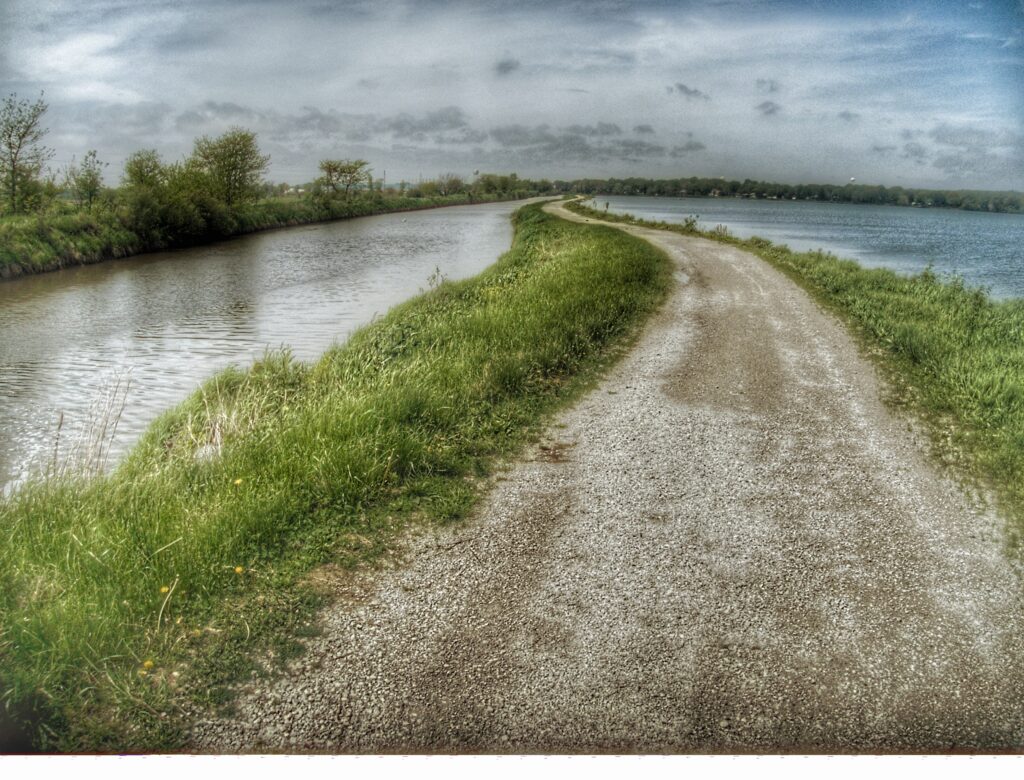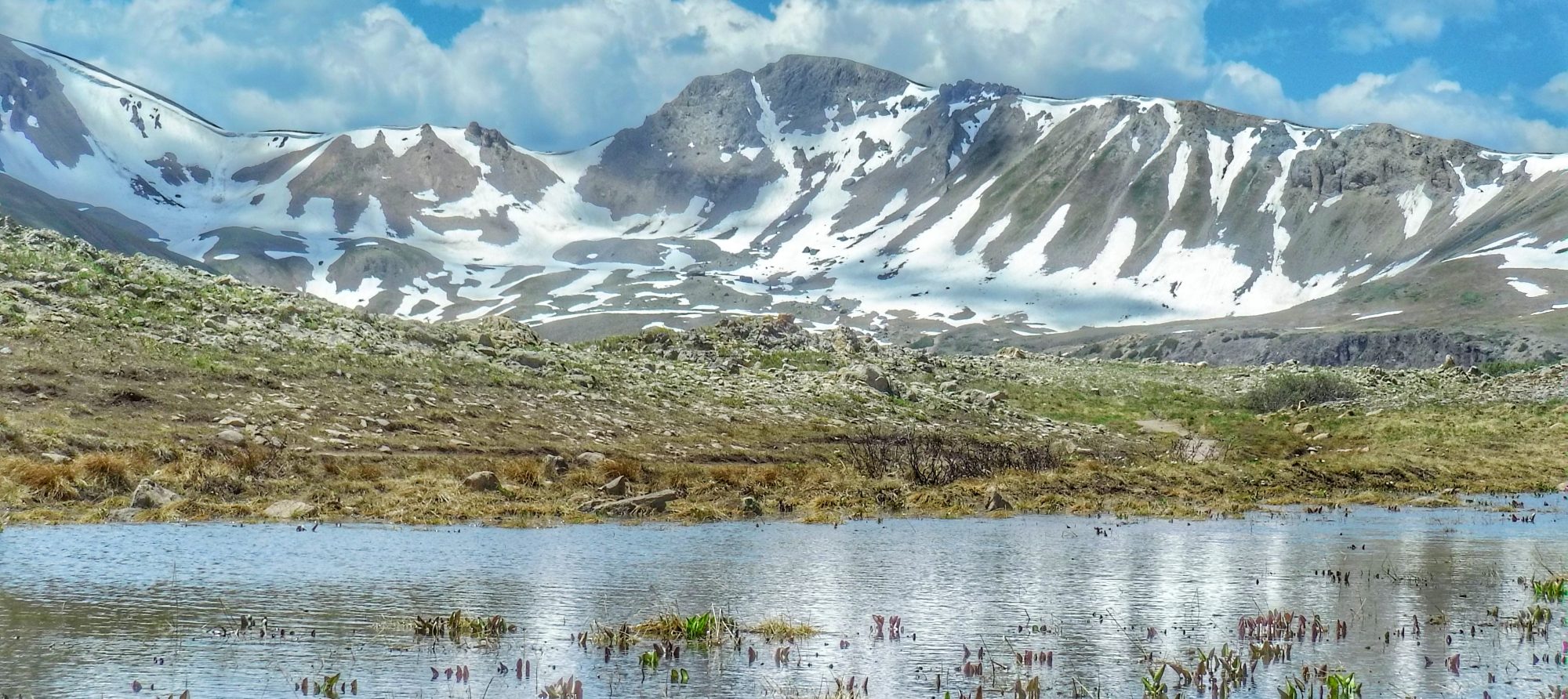May, 2019
County Road K wasn’t bad. A few potholes here and there, and it had its share of dead animals, but for a road in rural Missouri, it was looking better than I had imagined. Recently, I had been on several back roads in Missouri. The recent rains and flooding were taking their toll, and many of the roads were in disrepair.
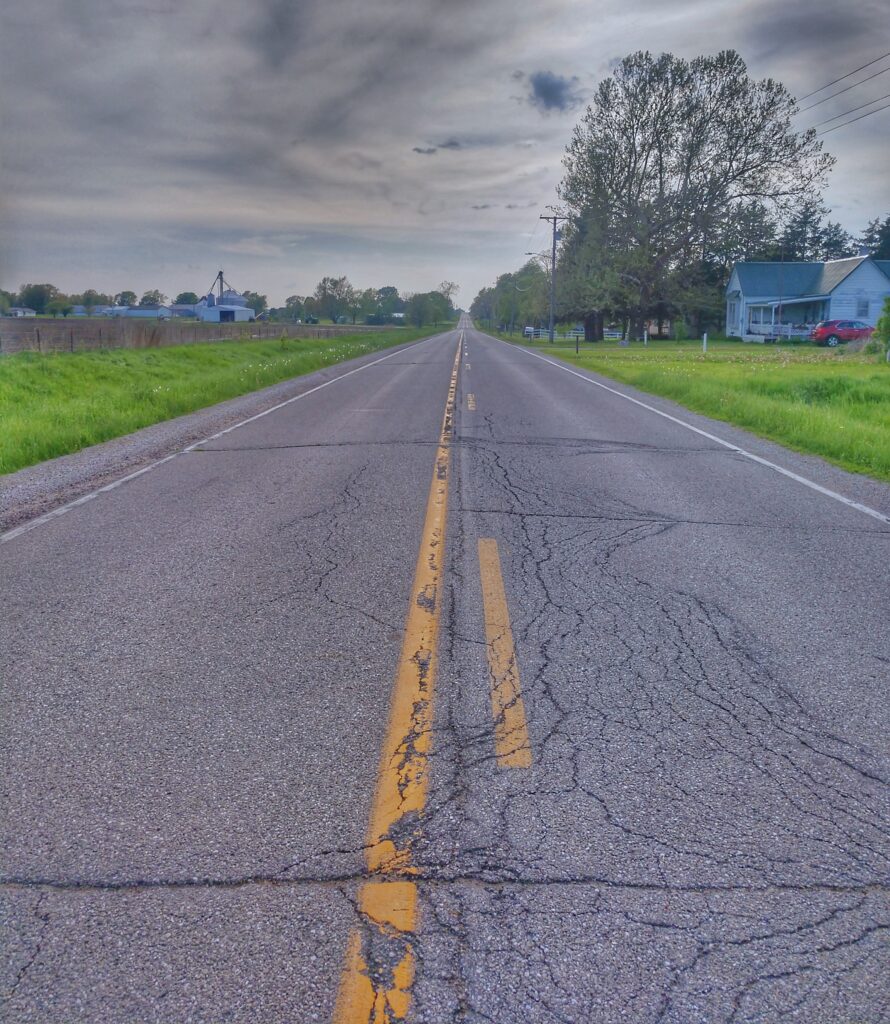
The rainy season is not the best time to visit the Mississippi River valley, but when work calls, I pack my bag and go where I’m needed. I was needed in Hannibal, Missouri, and Davenport, Iowa for two weeks. I packed my bag and went. It rained the day I arrived. It rained the day I left. And it rained several of the days in between.
I landed in St. Louis on a Monday afternoon. It was cool, but not cold, and clouds filled the sky. I showed up at the car rental lot to grab a car. The agency I use lets me pick whatever car I want. I was in luck that day. Because of the rains, there was a new Mustang convertible in the lot. Who wants a convertible when it’s raining? I mean, besides me. Ten minutes later, I was traveling north to Hannibal.
There are several ways to get to Hannibal from St. Louis. My least favorite is to take U.S. 61, a fast, ugly road with no imagination. My favorite is to cross the Mississippi River into Alton, Illinois, and follow the rivers (the Mississippi and the Illinois) all the way to Quincy, where I usually stay when working in Hannibal. My second favorite route, the one I’ve driven the most, follows State Highway 79 along the Mississippi, all the way into Hannibal. My two favorite routes had varying degrees of water on the roads from flooding, and I refuse to drive Highway 61 unless there is no other way. I found another way. County Road W.
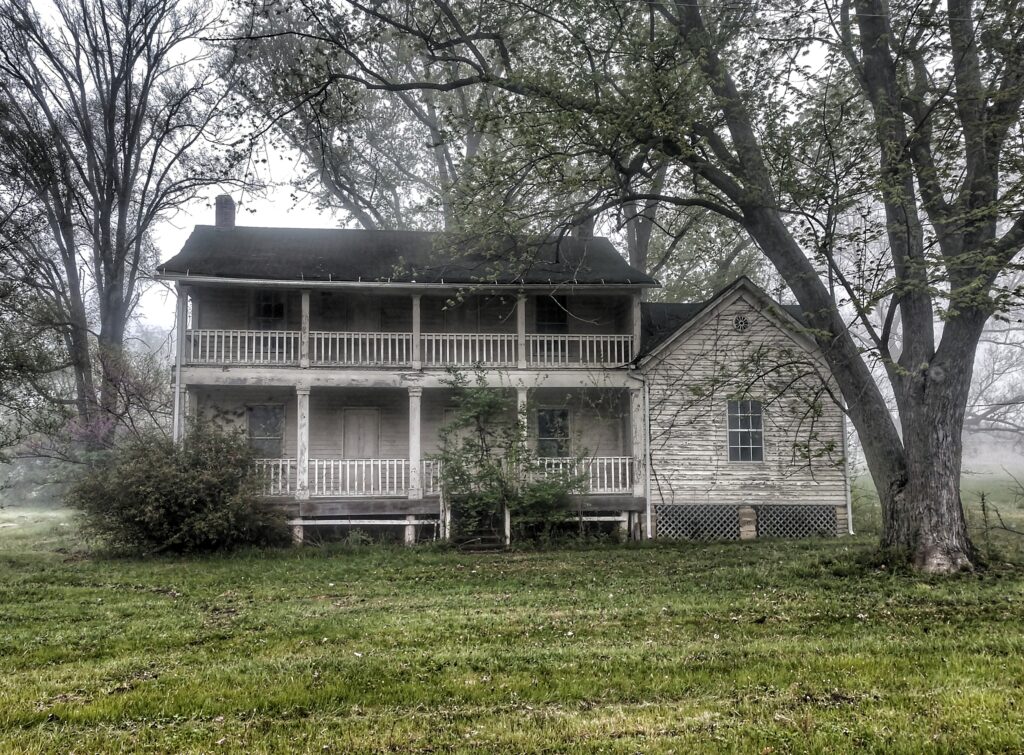
County Road W is a lovely, two-lane road that passes by farms and through dells, and over small creeks. It meanders far enough away from the Mississippi River to avoid flooding. I knew that there were areas along Highway 79 that were closed. I also knew that If I could make it to Clarksville, I would be able to get to the town of Louisiana, where I could cross over the river into Illinois and make it safely to Quincy. With these bits of knowledge, I jumped onto State Highway 47 near Winfield, Missouri, and then onto Road W just outside of Chantilly.
Most of the small towns along Road W, such as Chantilly and Snow Hill, and Paynesville are just that; small towns. There are no places to stop to eat, no gas stations, and many don’t even have a bar. They are places where a few people call home and probably have for many years. There is, however, much to see. And there was no flooding. I rode W through Turpin north into Clarksville, and ten miles north on 79, I crossed the Mississippi River into Illinois. An hour later, I pulled into my hotel in Quincy. Thus, began my latest trip to the heartland.
This latest trip was comprised of two weeks of work; the first week in Hannibal and the second week in Davenport. Work started early that first Tuesday morning and I kept busy until Friday afternoon. By 1:00 PM on Friday I was done and ready to move on to Iowa. My destination for the weekend was a bed and breakfast in Amana, Iowa. I had never been to the Amana Colonies before and had not heard much about them. When looking for a place to rest for the weekend, I consulted Google, searching for quaint places between Hannibal and near Davenport. Amana registered high in the search, I liked what I found, and booked a weekend at the Village Guest Suite.
The evening before traveling to the Village Guest Suite, I pulled up a map on my laptop and began looking for less-traveled roads. As I was perusing the map, I saw a small town in southern Iowa that called my name. It literally called my name. Hayesville. I had to go. It was only about 150 miles out of the way. I had time. I had fuel. I had coffee. And I had a convertible. And so I went.
I left work and drove up US 61. I know I said I do not like 61, and I still don’t, but it was a short drive to Keokuk and the road wasn’t quite as ugly. I figured I would quickly get up the road, grab lunch, and make my way to the backroads of northern Missouri and southern Iowa. It didn’t take long to get to Keokuk, and I found a truck stop off the highway that had a Denny’s Restaurant.
I loathe chain restaurants about as much as I do interstate highways, but I saw nothing else around. I parked the car, put the top up, and made my way into the restaurant. I quickly got a booth and ordered a salad. I was quite hungry and looked forward to a quick meal so I could get back on the road. I didn’t get my quick meal as I thought. My salad took over 30 minutes to arrive. I was close to getting up and leaving when the waitress finally brought it. It was a good salad though and filled me up. By 3:00 PM, I was back in the car, top down and shoes off, heading west on US Highway 136. This highway was nice. Less traffic and better scenery. I rode it for about 30 minutes until it intersected with County Road K. This is the road I planned on taking into Iowa and toward Hayesville.

Northern Missouri is okay. Southern Iowa is better. Much better. There was a noticeable difference when I crossed the state line. It’s hard to explain, but I’ll try. Missouri is like the scruffy teenager who comes to your door when you’ve ordered pizza. Iowa is like the clean-cut Mormon missionary who comes to your door to sell you religion. The rural roads in Missouri are tidy. The rural roads in Iowa are clean. It’s as if once a week, people knock at the Iowa state line, say “Housekeeping”, and proceed into the state, cleaning as they go. Even though when County Road K crossed the line and became a dusty dirt road, it was a better road. And beautiful. I was surrounded by farms and cows and lakes and woodlands. All was spotless. The housekeepers must have just been through.
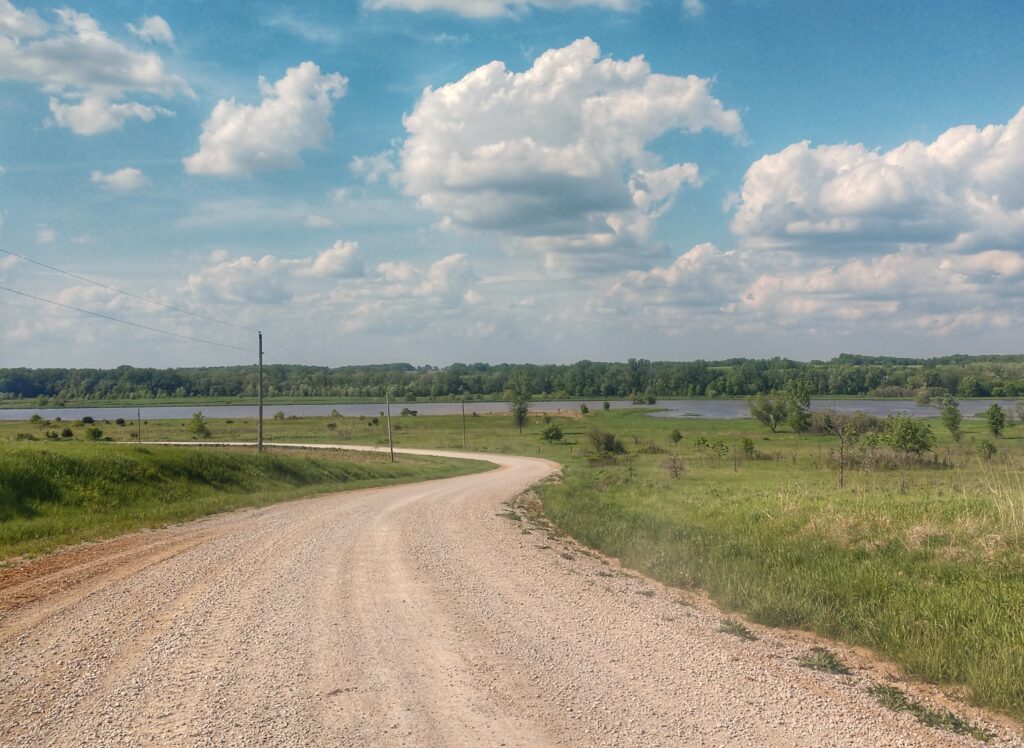
The differences in the area became even more noticeable about 13 miles into Iowa. Roads became smoother. Farms became prettier. Whereas Missouri had old barns with peeling paint, Iowa’s old barns were freshly painted, and most had a design, usually a patch of painted quilt, but many with the emblem from either the University of Iowa or Iowa State. I learned about why these differences are there from someone I meet the following day at a brewery in Amana. More on that in a bit.
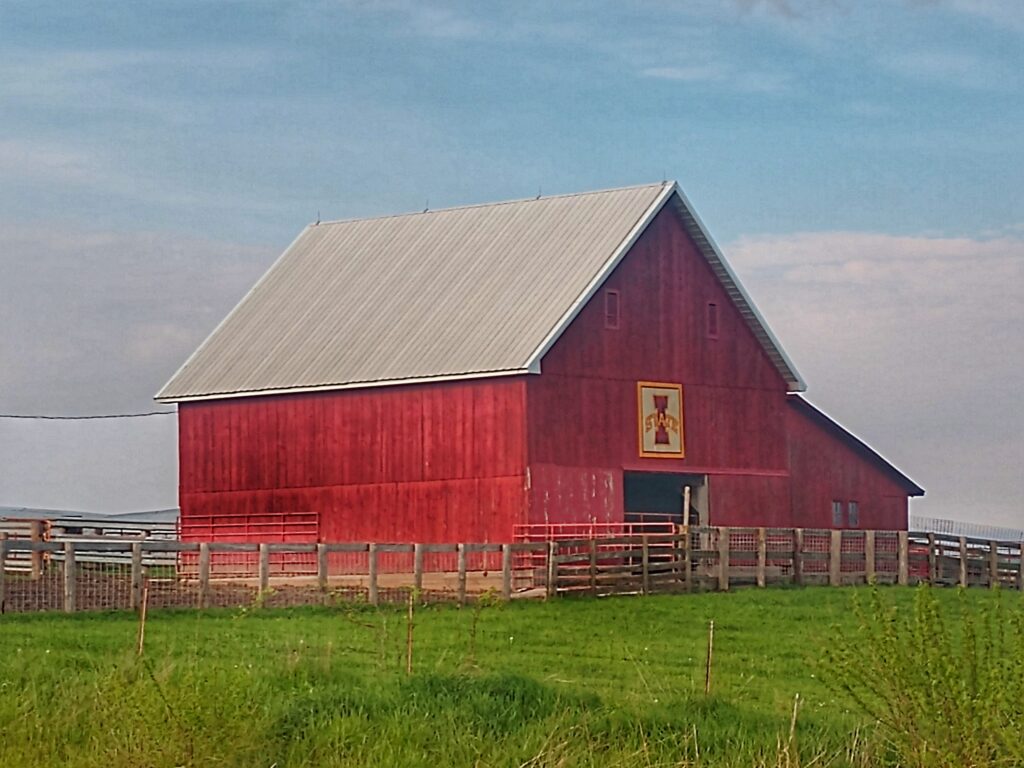
My destination was Amana. But as mentioned earlier, I took an unusual route, one that took me to Hayesville and beyond. I crossed the Iowa state line near Mount Sterling. Here, Missouri County Road K became Iowa W20, and turned to dirt. I drove north on W20, kicking up dust and passing several groups of teenagers tearing up the road on their ATVs. I passed several large farms, stopped to make a few photographs, and eventually found State Road 2. I missed a turn on 2 trying to find State Road 1, and ended up following 2 east for several miles, passing through Milton and Pulaski and Steuben into Bloomfield. There I caught US 63 north to Ottumwa, crossed the Des Moines River and continued until I found State Highway 141. This was a typical road in rural Iowa; two lanes with no shoulders, surrounded by cornfields and farmhouses. I had to zig and zag more than once to find County Road 21, and then zag and zig to get onto farm road G48. The road to Hayesville.

Hayesville is small. The 2017 population figure was 49 people. I counted none. I stopped in the city park, which at one time was a school. Since there aren’t enough kids to teach in Hayesville anymore, the school is closed and the kids are probably bussed to a nearby community that has more than 49 people. Again, I stopped to make a few photographs, walked up and down Main Street for two minutes (that’s all the time it took to walk up Main and back down Main), climbed back into my car and headed east out of Hayesville toward County Road 149 (somehow it magically appeared east of town when it was west of town a few minutes earlier). I passed one truck on my way out of town and waved to its lone driver, possibly a resident of Hayesville, and perhaps a distant relative of mine. He looked at me, smiled, and waved back. He didn’t much look like me, so I guess he was from another Hayes clan.
Hayesville to Amana took about two hours, as I followed more back-roads and side roads and county roads, staying off any major roads. The temperature dropped from over 85 degrees to around 60 degrees in 30 minutes. I briefly thought about pulling over and putting the top up on the car. It was a passing thought, and I quickly dismissed it. Rain clouds filled the skies to the north, but not over me, as I meandered through farm country. I pulled into Amana at 7:30 PM, just as the first drops of rain splattered on my windshield. I pulled into the parking area of the Village Guest Suite Bed and Breakfast, raised the top, grabbed my bag, and made my way inside to check-in for the weekend. I was met by Virginia, the innkeeper, who welcomed me to Amana. I asked about a place for dinner.
“You’re just in time. All of the restaurants here stop seating people at 8:00. I work at one. It’s quite good if you like German food.”
I thanked her for the recommendations, grabbed my raincoat and wallet, and walked the four blocks to the Ox Yoke Inn, the restaurant where Virginia worked. I arrived just before they stopped serving and had a great German dinner and beer. Outside, the rain started coming down in buckets, and I was glad I grabbed my raincoat. The meal and beer made for a perfect ending to my day on the long road to Amana.
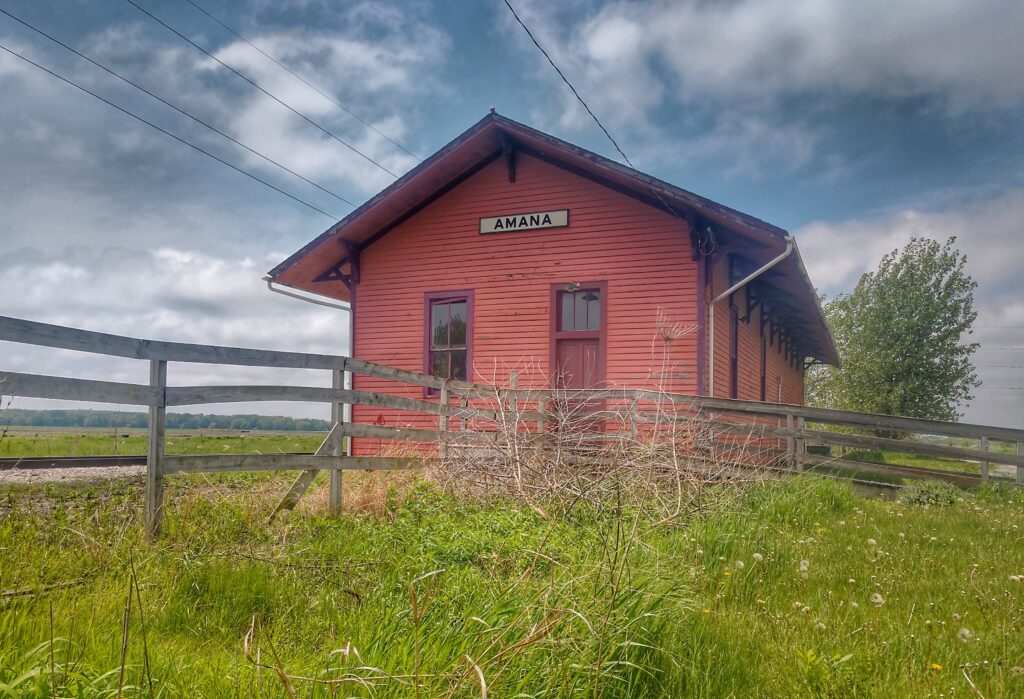
I promised you I’d tell you about the differences between southern Iowa and northern Missouri, as heard from a new acquaintance I met the next day. It goes like this.
I was finishing a long walk in the countryside that Saturday morning. I wandered back into Amana from the south, passing the old (and shuttered) railroad station. As I approached town, I heard the familiar sounds of German music. I rounded a bend and found myself in front of the Millstream Brewery. Never one to pass a brewery, I went inside and ordered a pilsner, and then proceeded to the open patio overlooking the Mill Race creek. A couple, along with their basset hound, was seated a table away, enjoying a pitcher of wheat beer. I made a remark about their dog’s sad eyes, and the fact maybe he wanted some beer. We struck up a conversation, and before I knew it, I was sitting at their table drinking beer and telling stories. I told the story of driving up through Missouri and how much I noticed the gradual difference between Missouri and Iowa. Jim, who hails from Iowa told me about the Honey War of 1839.
The Honey War was a bloodless dispute between what was then the state of Missouri and the Iowa Territory. The dispute was over a 9.5-mile-wide swath of land between the two. It was called the Honey War because the only three casualties were trees that contained beehives. In the end, the Supreme Court sided in Iowa’s favor, and a 30-mile-wide stretch of land from the eastern border to the western border became part of Iowa.
“That’s why the difference in people and land is gradual.” Jim, my new drinking buddy said. “People from Southern Iowa are really Missourians.”
With a somewhat amused look on his face, Jim took a swig of beer and said “A lot of folks around here wish we’d of lost that war. Me included.”
